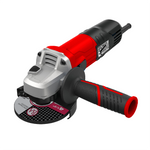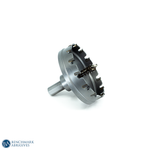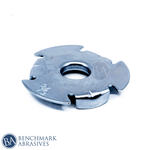
Advantages of Using Carbon Steel in Construction

Carbon steel is the backbone of modern construction, favored globally for its unmatched tensile strength-to-cost ratio. As an alloy of iron, carbon, and trace elements, its durability and versatility—spanning from structural beams to fine tools- make it essential.
In this blog, we will explore the composition that gives carbon steel its strength, its subcategories, and why it remains the most affordable and reliable structural material available.
Carbon Steel: Composition and Definition
Steel is an alloy metal, primarily a mixture of iron, carbon, and trace elements. What distinguishes carbon steel is that carbon is the principal alloying element, giving the resulting metal unique strength and hardness properties.
- Carbon Content: In genuine carbon steel, the carbon content is typically between 0.05% and 2.1%. As the carbon content increases, the final product becomes stronger and harder.
-
Trace Elements: According to the American Iron and Steel Institute (AISI), genuine carbon steel must also meet specific limits on other elements:
- Maximum Manganese content: 1.65%
- Maximum Silicon content: 0.6%
- Copper content: 0.4% minimum to 0.6% maximum
High Carbon Steel Vs. Low Carbon Steel: Quick difference
Carbon steel is divided into subcategories based on its carbon percentage, which dictates the steel's properties and intended construction application.
| Steel Type | Carbon Percentage | Strength/Hardness | Ductility/Weldability | Typical Construction Use |
| Low Carbon Steel (Mild Steel) | Up to 0.30% | Lower | High (Very Weldable) | Structural frames, Rebar, Piping, and Automotive parts. |
| High Carbon Steel | At least 0.60% | Highest | Low (Brittle, Less Weldable) | Cutting tools, Springs, Wrench heads, Coil springs. |
Low-Carbon Steel in Construction
Low-carbon steel (often called mild steel) is the most common form in structural applications due to its high ductility and weldability. While it is less robust than high-carbon steel, its flexibility makes it ideal for building frames in public, private, and residential structures, as it can be easily shaped, rolled, and joined.
High-Carbon Steel in Construction
Due to its increased hardness and resistance to wear, high-carbon steel is primarily used for the cutting tools needed in construction—such as cutting edges, springs, hammers, and wrenches—rather than large structural members.
Read More: Difference Between Carbon Steel and Stainless Steel
Benefits of Using Carbon Steel in Construction
1. Superior Durability and Yield Strength
Carbon steel is strong and highly impact-resistant. It has a very high yield strength, which is the maximum stress a material can withstand before it deforms irreversibly. This property allows structural carbon steel to be manufactured into standard shapes (I-beams, H-beams, and C-channels) that can bear enormous, predictable loads, which is crucial for high-rise construction and infrastructure projects. Buildings made with structural steel are also more resilient to natural disasters like earthquakes and tornadoes.
2. Affordability and Cost Efficiency
Compared to other metal alloys (such as stainless steel), carbon steel has a significantly lower production cost. Because of its durability and affordability, structures can be built quickly and reliably without excessive material consumption.
3. Sustainability and Recyclability
Carbon steel is highly recyclable and sustainable. This reduces the need for raw resource extraction and lowers the overall environmental impact of a construction project.
The Main Drawback and Solutions
The main disadvantage of carbon steel is that it is more prone to rusting when exposed to moisture and oxygen. Unlike stainless steel, it does not naturally form a protective layer of chromium oxide.
To ensure long-term structural integrity, the construction industry utilizes several solutions:
- Galvanizing: This involves coating steel components (such as rebar, pipes, and light structural members) with a protective layer of zinc. As a sacrificial anode, zinc corrodes before the steel, increasing the life of the product.
- Protective Coatings: Exposed structural steel, such as on bridges or external building frames, is often coated with layers of epoxy or polyurethane paints. These form a protective barrier that seals the steel from the external environment, preventing the corrosion process.
- Encasing: Steel rebar and many structural members are encased in concrete, which offers a naturally alkaline environment that protects the steel from direct moisture and oxygen exposure.



































































